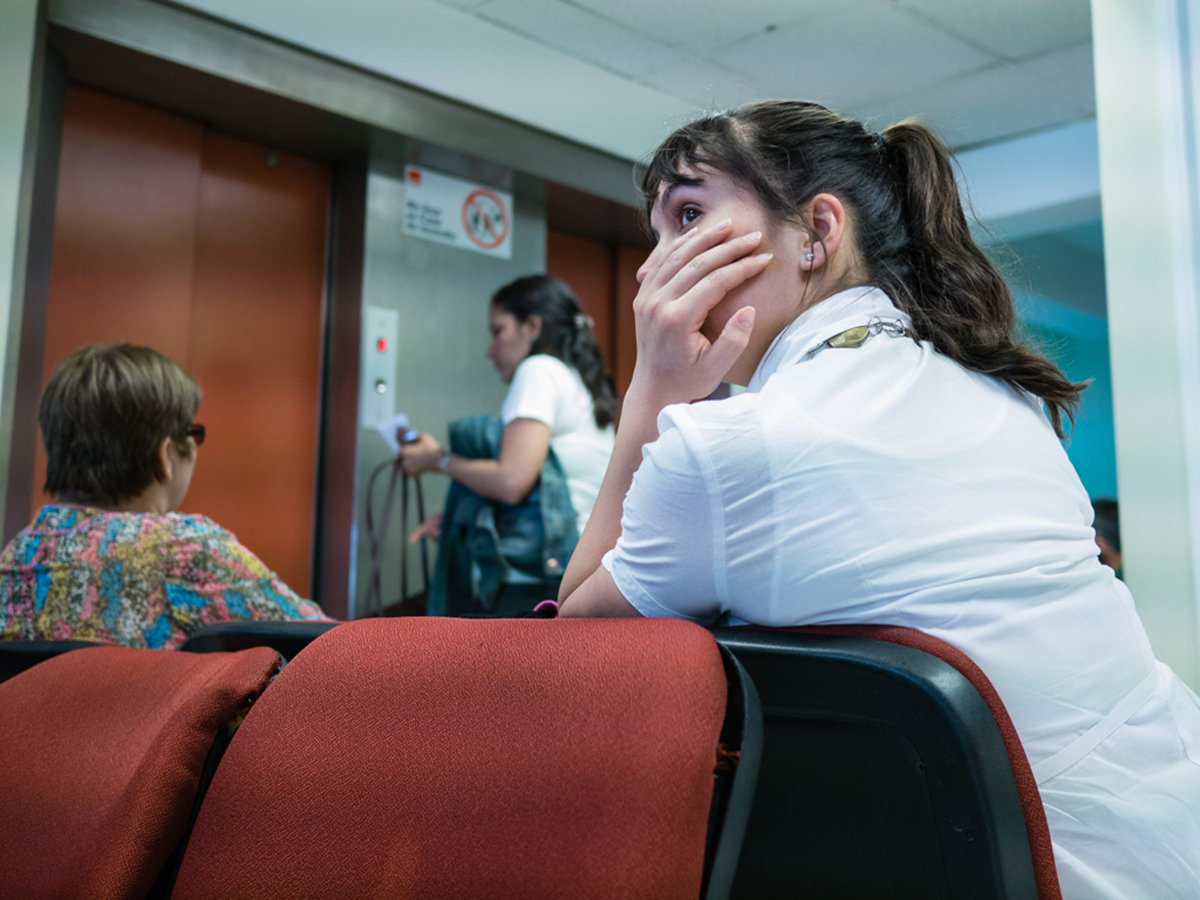Every year, just in the United States, over 22,000 women are diagnosed with ovarian cancer. Every year in the United States, over 15,000 women die of ovarian cancer, which is usually only diagnosed once it has begun to spread.

No Reliable Laboratory Tests for Ovarian Cancer
There aren't any easy and reliable medical tests for ovarian cancer. Blood work is never definitive. Tumors in the ovaries cause elevation of a protein in the blood called CA-125, but 50% of the time, they don't, and CA-125 is made by many different kinds of abdominal tumors in both men and women.
Doctors may also order tests for human Chorionic gonadotropin (HCG), alpha-fetoprotein (AFP), and/or lactate dehydrogenase (LDH), but these are more useful for telling what kind of ovarian cancer is present, not whether or not it is present.
Ultrasound and Laparoscopic Procedures Not Reliable, Either
Transvaginal ultrasound, the insertion of a probe into the vagina, can detect unusual size and shape of the ovaries and Fallopian tubes. If ultrasound indicates tumor growth, then the doctor can order computed tomography (CT) or positron emission tomography (PET) to analyze the metabolic activity of the ovaries. Cancer cells tend to burn a great deal more sugar than healthy cells, and are sometimes detectible on these kinds of scans. When women are not well enough to have surgery, the physician may use a device called a laparoscope to perform laparoscopic surgery to use a needle to take a sample of suspected cancer for analysis under a microscope in the pathology lab.
Definitive Test for Ovarian Cancer Is Biopsy
The only truly reliable diagnostic tool for ovarian cancer, however, is for a physician who is trained in both surgery and oncology to perform a biopsy.
The doctor goes in, removes the tumor, and then the pathologist finds out if the mass was malignant. This is the gold standard for diagnosis, but your primary care provider cannot perform it, and only 8% of women who are later found to have ovarian cancer actually get it because their cancers progress too far for surgical treatment before they are first seen by an oncologist.
See Also: Ovarian Cancer: Treatments, Drugs and Risks
The Early Warning Signs of Ovarian Cancer
The early symptoms of ovarian cancer are also vague, but about 40% of women who have the disease present these three:
- Increased abdominal girth, or bulging tummy, without gaining weight.
- Problems with urination, dribbling, not feeling finished, not being able to control flow.
- Feeling bloated all the time, often with acid reflux, gas, and loss of appetite, specifically from feeling full too quickly.
There are many, many conditions that can cause all three of these symptoms. Just having all three symptoms doesn't mean a woman has ovarian cancer. But they are a good reason to get a referral to a specialist. There are also telltale signs of ovarian cancer in natural approaches.
What Natural Medicine Tells Us About Ovarian Cancer
When it comes to treating cancer, natural medicine is never a substitute for conventional medicine. What naturopathic medicine and "natural" approaches in general can do is to help steer you to the doctor in a more timely fashion, or to help you get well faster. "Going natural" is usually (although not always) a disaster for women who have ovarian cancer. Women who have ovarian cancer need all the help they can get.

Traditional Chinese Medicine, for example, teaches that women who have what Western medicine calls ovarian cancer typically have patterns of symptoms that suggest the disease. Different women can have different patterns of symptoms for the same disease.
One woman who has ovarian cancer might experience:
- Dribbling of urine, needing to "go" frequently but not going very much.
- Dryness of the mouth and lips, especially first thing in the morning.
- Lower back pain.
- Leg pain.
- Itchy skin.
- (In post-menopausal women, in particular:) Blurred vision.
Another woman who has ovarian cancer might experience:
- Unusual menstrual bleeding, or bleeding after menopause.
- Unusually clotted blood.
- Persistent, dull abdominal pain, as if something were "stuck" in the abdomen.
- Sluggish digestion, bloating, gas, and heartburn.
Chinese medicine, of course, has combinations of herbs that address combinations of symptoms.
That is difficult to do with conventional medicine, and actually women have higher survival rates with Western medicine than without it.
What else seems to go along with a higher risk of ovarian cancer?
- Family history is a strong indicator of disease. If your mother, grandmother, sitser, or aunt had the disease, it is more important to see a doctor for a definitive diagnosis even if it turns out you don't have cancer.
- Scandinavian women, especially Norwegian women, have unusually high rates of the disease. Asian women, especially Japanese women, have unusually low rates of the disease.
- Women who eat lots of prebiotic foods, that is, foods that feed probiotic bacteria, seem to have lower risk of developing ovarian cancer. Prebiotic foods include chicory, endive, onions, and berries. Just one serving of one of these foods every day is enough to make a difference.
- Women who eat more tomatoes, in one study, had a 60% lower risk of developing ovarian cancer, probably because of the lycopene in this common food. Just one cup of tomatoes a week is enough to make a difference.
See Also: Ovarian Cancer - The Scary Connection To Height And Weight
But the most important thing women can do to know to see their doctors is to know and accept their bodies. If you are pleasingly plump, but lately you are finding yourself plumper with any of the symptoms mentioned above, see your doctor and express your concerns. If you have well developed abs but working out isn't working for you, mention this to your doctor. You may need early intervention.
Many women who develop ovarian cancer actually do survive--when diagnosis and treatment are made available in time. Paying attention to your body gives you the early warning signals you need to have a fighting chance.
- Goff BA, Mandel LS, Drescher CW, Urban N, Gough S, Schurman KM, et al. Development of an ovarian cancer symptom index: possibilities for earlier detection. Cancer. Jan 15 2007. 109(2):221-7. [Medline].
- Ryerson AB, Eheman C, Burton J, McCall N, Blackman D, Subramanian S, et al. Symptoms, diagnoses, and time to key diagnostic procedures among older U.S. women with ovarian cancer. Obstet Gynecol. May 2007. 109(5):1053-61.
- Photo courtesy of Francisco Osorio by Flickr: www.flickr.com/photos/francisco_osorio/8228710532
- Photo courtesy of Skånska Matupplevelser by Flickr: www.flickr.com/photos/matupplevelser/4643772927


Your thoughts on this